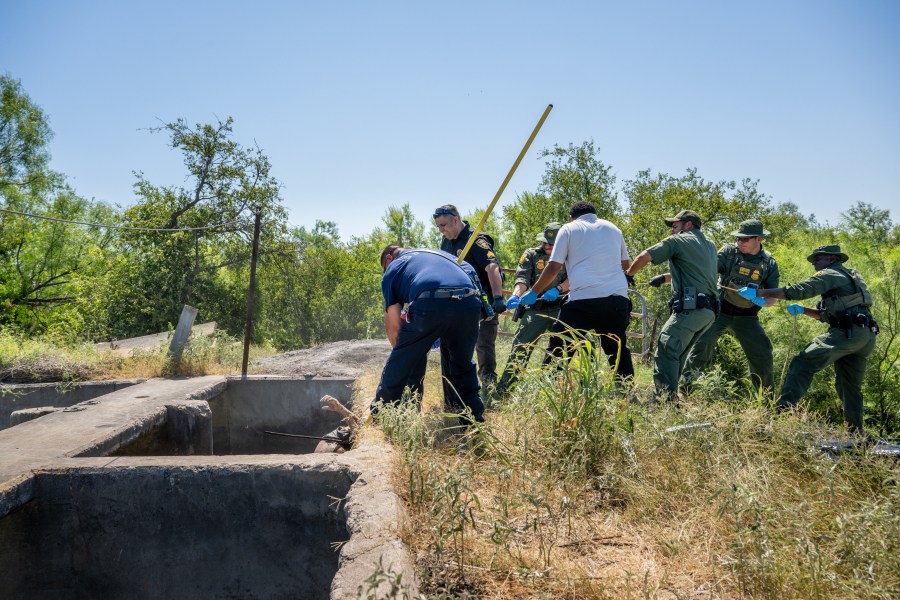(NewsNation) — Just before 10 p.m. on June 15, a migrant mother and her two children stood under a helicopter’s spotlight in the Arizona desert and waited for first responders to rescue them from a heat emergency.
The family had already been without water for about two hours, and now the woman’s 9-year-old son was having seizures, according to United States Customs and Border Protection. Despite rescue efforts, the boy died, joining more than 100 migrants who have succumbed to the persistent and oppressive heat that has lingered in the southwest for several weeks, according to CBP reports.
Each year, migrants traversing harsh desert conditions die from heat exposure during their trek to the U.S.
June through August are notorious for dehydration and heat-related emergencies near the border, said Brad Jones, a volunteer and board member for the non-profit Humane Borders. Those risks are especially pronounced now, as scorching temperatures in some areas approach new records.

“We’re talking 110, 115 degrees,” Jones said. “And that just makes untenable situations even more untenable.”
The National Weather Service has issued several heat-related advisories, watches and warnings from Florida to Texas and California.
High temperatures of 110 degrees Fahrenheit or more in Phoenix, Arizona, have persisted for 10 days and at least 13 deaths in Texas and another in Louisiana have been linked to the heat, The Associated Press reported.
Agents in Texas’ Del Rio Sector reported at least six deaths in a five-day span last week, and they expect those numbers to climb.
“The terrain along the border is extreme, the summer heat is severe, and the miles of desert migrants must hike after crossing the border in many areas are unforgiving,” U.S. Customs and Border Protection said in an official statement.
Construction of a wall along the nation’s southern border has driven asylum seekers — who ultimately hope to surrender themselves to Border Patrol — further into the desert, Jones said. Smugglers oftentimes abandon migrants in remote areas, leaving them to fend for themselves.
“The general recommendation is to stay put, but sometimes migrants are given misinformation by the coyotes — human smugglers — and they may be told to go one direction when they should be going the other,” Jones said. “That puts them at even greater risk.”
Dehydration and exposure are behind most migrant deaths during border crossings, according to Humane Borders.
The 9-year-old boy’s death in Nogales, Arizona, is just one in a handful of similar incidents CBP agents have reported in recent weeks.
During the week of June 25, officers carried out 226 heat-related rescues and recovered 13 migrants’ bodies, U.S. Border Patrol Chief Jason Owens tweeted.
“USBP continues to see dehydration as the leading cause of the rescues (and) the deaths we encounter,” Owens said. “Extreme temperatures are a serious concern, especially during summer months.”
The Southwest’s heat wave has made migrants’ travel more dangerous than usual, but deaths along the border aren’t anomalous.
The number of U.S. Border Patrol heat-related rescues rises each year, impacting nearly 4,000 people in need of rescue during Fiscal Year 2021, according to the most recent data available from U.S. Customs and Border Protection.
Elemental exposure was listed among the causes of death in more than 1,300 cases since 1981 in Arizona alone, according to data compiled by Humane Borders.
Those are conservative numbers, Jones said.
“The true number must be much higher than that,” he said. “We don’t really even know what the scope of the true problem is.”
Mitigation efforts are often met with resistance, too.
For the past two decades, Humane Borders has set up water stations throughout the desert, providing migrants free access to hundreds of gallons of clean, drinkable water.
But Jones explained some of them leaked after being shot at, or the water was poisoned, prompting the non-profit to wrap their tanks with locks and chains.
Long-term, migrant advocacy groups say the nation needs comprehensive immigration reform that addresses conditions like climate change or political and economic instability that drive asylum seekers to the U.S.
Calls for comprehensive immigration reform have come from both sides of the aisle for decades, but haven’t seen much movement.
“In the short-run, not a whole lot can be done except to try to alleviate the suffering and provide the humanitarian relief that needs to be provided in the long-run,” Jones said.
Meanwhile, the existing dynamics that land migrants in dangerous conditions are a “recipe for almost certain death,” he said.
“When you couple in the baking, high temperatures that we have right now, that probability of death really, really gets high,” Jones said.